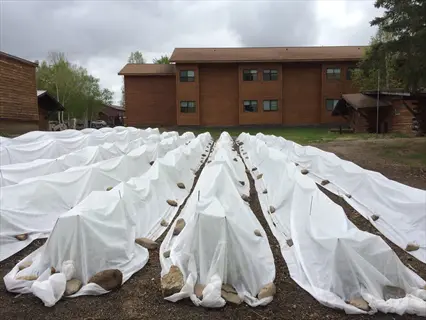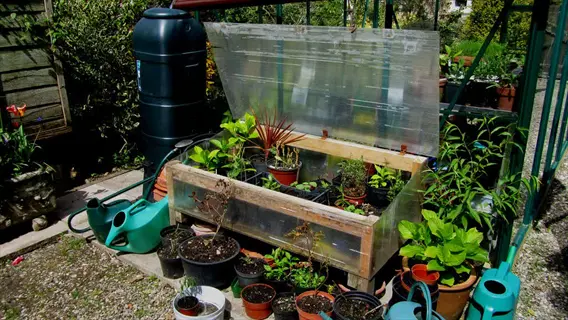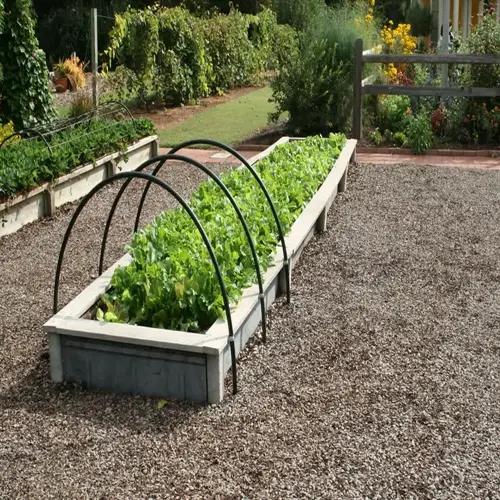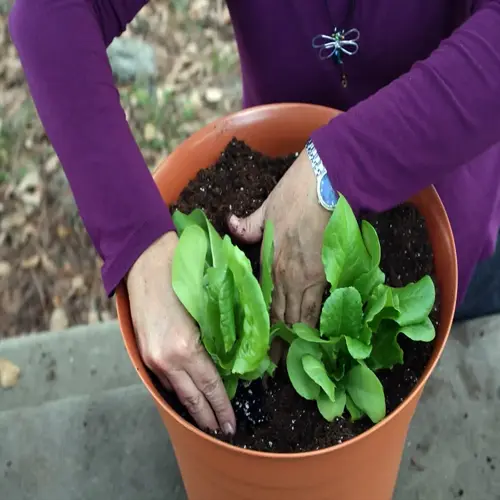When to Plant Spinach for Best Results

Written by
Nguyen Minh
Reviewed by
Prof. Charles Hartman, Ph.D.Know when to plant spinach: Early spring: 4-6 weeks before last frost.
Fall - Plant spinach 6-8 weeks before the first frost in the fall for a good winter harvest.
In spring, choose bolt-resistant varieties, such as 'Space', if you are in a warmer zone (8-10).
In the fall, select a cold-hardy variety, like 'Winter Queen', when it freezes at planting.
For either season, supply continuity of harvest by succession planting every 14 days during the cooler seasons.
To protect your planting, row covers can be added to the planting if temperatures fall below 28°F (-2°C) to guard against frost.
Article Navigation
Getting the timing of planting spinach just right is critical for a successful harvest. Spinach delivers fantastic nutrition, including iron for energy, vitamins A and C for immunity, and magnesium for muscles. Growing spinach allows for higher-quality leaves than store-bought varieties. I always notice a distinct flavor in the spinach I grow in my garden.
The timing of planting plays a direct role in the duration of your spinach harvest. This article will provide specific timing plans for spring and fall. You can find the exact planting dates for your region by visiting this link. Get time-tested methods for extending your spinach harvest. I have been practicing these for years.
Choosing Spinach Varieties by Season
Choosing spinach types requires knowing bolt resistance. Height stimulates early flowering. Types such as Space can harvest with temperatures up to 75°F before bolting occurs, while other types begin bolting at lower temperatures. I test different kinds of plants every year in my garden. Temperature thresholds can significantly impact the timing of your harvest.
Leaf texture impacts culinary use. Savoy spinach has crinkly leaves that hold dressings nicely. Ideal for salads. Smooth leaf spinach, however, breaks down evenly for cooking soups and stir-frying. Choose one based on your kitchen needs. I grow both types for flexibility.
The area you live in drives what varieties you select. Warm-growing zones 8-10 require planting heat-tolerant types, such as Summer Supreme. Cold growing zones 3-5 can plant frost-resistant types like Winter Queen. Choose varieties to complement your zone and growing climate. I always make slight adjustments to what I planted the previous year based on the temperature pattern.
The duration of harvest varies greatly depending on the type. Spring types, such as Baby Leaf, take 30-day harvests. Fall varieties can go 60 days or more. You should plan your planting based on the length of harvest you want to achieve. I often extend my harvests by planting both types.
Planting and Care Essentials
Check your soil pH before planting. You can test it yourself with a test kit from home. Mix the soil, distilled water, and testing solution from the kit together. Observe the color changes and match them against the pH chart included in the kit. Spinach prefers a slightly acidic pH soil, ranging from 6.5 to 7.0. You can add lime to increase the pH if it is too low, or sulfur to decrease the pH if it is too high. I personally test my soil every spring.
Select your compost wisely! Vermicompost from worms is a mild form of nutrients and is the best option for young spinach. Manure-based compost has a much higher nitrogen composition and will allow for growth. Seedlings should be treated with vermicompost, and after the seedlings are established, they should be treated with manure compost. I do layer both types of compost in my garden beds.
I will thin my seedlings without disturbing the roots. I will use scissors to snip the extras to soil level when the seedlings reach a height of two inches. I will refrain from pulling the seedlings out of the soil to avoid damaging the roots and ensure that the other seedlings continue to grow. I spaced my plants four to six inches apart. I execute my thinning in the early morning while the ground is moist.
Position soaker hoses six inches from spinach rows. Run hoses for 30 minutes at dawn. This does an effective job at delivering water to the roots, while keeping our plants dry. By placing hoses properly, disease is prevented and water is conserved. Each time I water, I check the soil's moisture level.
pH Testing and Adjustment
- Test soil pH using a home testing kit or digital meter before planting spinach
- Spinach requires slightly acidic to neutral soil ranging from 6.5 to 7.0 pH
- Add garden lime to raise pH levels when measurements fall below 6.5
- Apply sulfur to lower pH when measurements exceed the neutral 7.0 threshold
- Retest soil chemistry after two weeks before proceeding with planting
Organic Matter Incorporation
- Thoroughly mix three inches of aged compost into the top six inches (15 cm) of soil
- Choose between composted manure or plant-based compost options for enrichment
- For dense clay soils, incorporate perlite to dramatically improve drainage capacity
- Sandy soils benefit significantly from coconut coir to enhance moisture retention
- Allow the amended soil to settle for one week before sowing spinach seeds
Soil Loosening
- Dig or till soil to a depth of 12-18 inches (30-45 cm) for taproot development
- Remove stones and debris larger than one inch (2.5 cm) in diameter
- Break up compacted layers using a garden fork to create air pockets
- Develop a fine crumb structure while carefully avoiding soil compaction
- Perform this task when soil is moderately dry to prevent clumping
Pre-Planting Moisture Prep
- Water soil deeply 24 hours before sowing to achieve uniform moisture
- Soil should feel moist but not waterlogged at planting depth when squeezed
- Apply organic mulch immediately after planting to maintain consistent moisture
- Check dampness by squeezing soil: it should hold shape then crumble easily
- Adjust watering frequency based on weather conditions and soil type
Nutrient Balancing
- Conduct a soil test to identify nitrogen, phosphorus, and potassium levels
- Incorporate balanced organic fertilizer two weeks before planting spinach
- Avoid high-nitrogen formulas that promote excessive leaf growth over roots
- Top-dress with compost tea every three weeks during the growing season
- Monitor plant color as an indicator of nutritional deficiencies or excesses

Row Covers
- Install lightweight polypropylene fabric over wire hoops for spring frost protection creating a physical barrier against cold
- Maintain an essential air gap of 2-3 inches (5-7.5 cm) above seedlings to prevent contact damage while trapping heat
- Temporarily remove covers during rainy periods to allow natural watering and prevent excessive humidity buildup
- This method effectively protects young spinach plants down to 28°F (-2°C) temperatures during early growth stages
- Remove protection completely when daytime temperatures consistently exceed 70°F (21°C) to prevent overheating stress

Shade Cloth
- Apply 30-50% density shade cloth suspended 12 inches (30 cm) above plants using support frames during heat waves
- This technique dramatically reduces soil temperature by 10-15°F (5-8°C) creating cooler microclimates for spinach
- Cover soil for 3-5 days before fall sowing when temperatures exceed 85°F (29°C) to precondition the planting area
- Position the cloth to block intense afternoon sun while allowing morning light penetration for photosynthesis
- Remove shading completely when temperatures consistently stay below 75°F (24°C) to maximize light exposure

Cold Frames
- Construct cold frames with angled transparent lids facing south to capture maximum winter sunlight exposure
- Insulate the northern side with straw bales to reduce heat loss during freezing nights maintaining internal warmth
- Strategically place water jugs inside as thermal mass to regulate temperature fluctuations throughout the night
- Ventilate by partially opening lids when internal temperatures exceed 40°F (4°C) to prevent condensation issues
- This protection system enables continuous spinach harvest even through snow cover and sub-freezing conditions
Extending the Harvest Window
Succession planting takes place every two weeks in spring and fall. When seeds are sown near plants just beginning to mature, it ensures a continuous supply of spinach. I typically start my first planting in early spring and continue until the first frost. With this technique, you will no longer be short of a harvest!
To obtain winter harvests, consider protecting fall crops during the winter months. To preserve plants until spring- simply apply thick straw mulch before ground freeze. Cold frames angled to the south work as well. They will trap the sun but shield from the wind. I overwinter crops annually in zone 5. Greens stay fresh under snow cover.
Establish advantageous microclimates with companion planting. Plant spinach next to taller plants, like corn or tomatoes, to provide afternoon shade. Stone walls absorb sunlight and heat during the day and emanate heat at night. I clump plants in blocks to conserve soil moisture.
Harvesting can promote regrowth. Use sharp scissors to cut the outer leaves at their base. When harvesting, always leave the central growing point intact. During the harvesting process, change your harvesting position around the plant. I prefer to harvest at dawn when the leaves are crisp and dry. You can usually expect to see new, rapidly developing growth in about 5 days.
Succession Planting
- Sow new spinach seeds every 14 days during spring and fall seasons
- Stagger plantings to ensure continuous harvests throughout cool months
- Use quick-growing varieties like 'Baby Leaf' for faster turnaround
- Track planting dates to maintain consistent 2-week intervals
Overwintering Techniques
- Apply thick straw mulch around fall-planted spinach before first frost
- Install cold frames with south-facing angles for maximum winter sun exposure
- Use row covers with insulating air pockets during extreme cold snaps
- Harvest snow-covered plants by temporarily removing protective layers
Microclimate Creation
- Plant spinach near taller crops like tomatoes for summer shade protection
- Use stone walls or fences to create thermal mass warmth in fall
- Position plantings on north slopes for cooler temperatures in warm zones
- Group plants in blocks rather than rows to maintain soil moisture
Regrowth Harvesting
- Cut outer leaves at the base using sharp scissors when they reach 4 inches
- Always leave the central growing point intact to enable new leaf production
- Harvest in early morning when leaves are most hydrated for faster regrowth
- Rotate harvesting locations around the plant to distribute energy evenly
Soil Temperature Regulation
- Apply dark-colored mulch in spring to absorb sunlight and warm soil faster
- Use light-colored mulch in summer to reflect sunlight and keep roots cool
- Install soil temperature probes to monitor conditions at root level
- Water with cool water during heat waves to reduce soil temperature stress
Best Time for Fall Planting
Determine your first frost date to ensure optimal timing for your fall planting. Zones 3-5 should plant 8-10 weeks before frost. Zones 6-7 should plant 6-8 weeks before frost. Zones 8-10 should plant 4-6 weeks before frost. I conduct frost tracking based on reports from local agricultural extension offices. Doing this timing will help your seedlings avoid cold damage.
Soil temperature controls germination success. Spinach seeds sprout best between 45-70°F depending on your zone. Use a soil thermometer at planting depth. Cold zones need 45-65°F. Warm zones require below 75°F. I take readings at dawn for accuracy.
Planting windows vary significantly in each area. Cold areas will plant late summer for fall crops. Warm areas will grow in the fall for winter crops. Planting timing should match your climate pattern. I adjust the dates every year based on the temperature patterns in my garden.
Protect from unanticipated drops in temperature. Put on row covers when the temperature drops below 35°F (I use cloches for single-plant protection). Cover them just before sunset so the warmth from underneath keeps them warm. I keep protection on hand from October onward for unexpected cold snaps.
Zones 3-5 (Cold)
- Plant 8-10 weeks before first expected frost (late July to early August)
- Soil temperature should be between 45-65°F (7-18°C) for germination
- Use cold frames immediately after planting for frost protection
- Select hardy varieties like 'Winter Queen' that tolerate -20°F (-29°C)
Zones 6-7 (Moderate)
- Plant 6-8 weeks before first frost (early September to early October)
- Ideal soil temperature range: 50-70°F (10-21°C)
- Apply straw mulch after first light frost for insulation
- Use row covers during unexpected early freezes below 28°F (-2°C)
Zones 8-10 (Warm)
- Plant 4-6 weeks before first frost (late October to November)
- Soil must be below 75°F (24°C) for successful germination
- Use shade cloth if soil exceeds 85°F (29°C) during planting
- Choose heat-tolerant varieties like 'Summer Supreme' for extended growth
Best Time for Spring Planting
Identify soil thaw indicators for spring planting. Cold zones are characterized by crumbly soil that no longer forms ice balls when squeezed. Moderate zones watch for snow-free ground that accepts water. Warm zones plant when winter rains stop. I test the soil by digging a six-inch hole.
Interest in seedling frost tolerance. Young spinach can tolerate temperatures of 28-32°F with little damage. Temperatures below 25°F require protection. Mature plants can survive even lower temps. Row covers are a good option for when you expect frost. I cover the seedlings with a sheet to protect them from a suspected freeze at night for good measure.
Every growing zone will have varying planting windows. Zones 3-5 plants can be in the late March to April time frame once the soil is thawed. Zone 6-7 plants can be for early March. Zones 8-20 plants can be in January-February before the heat comes. I use the choice local frost date to mark my calendar.
To hasten warmth to the soil for early planted crops, place black plastic mulch two weeks before planting the crop. It will absorb sunlight, radiating the heat to the soil underneath. Use cold frames also to trap warmth. I apply plastic mulch in February for March plantings. This significantly improves the speed of growth.
Zones 3-5 (Cold)
- Plant when soil thaws and becomes workable (late March to mid-April)
- Soil temperature must reach minimum 45°F (7°C) for germination
- Use cold frames for 2-3 weeks before last frost date protection
- Select frost-tolerant varieties like 'Space' that withstand 20°F (-7°C)
Zones 6-7 (Moderate)
- Plant 4-6 weeks before last frost (early March to early April)
- Optimal soil temperature range: 50-65°F (10-18°C)
- Apply floating row covers during unexpected late frosts
- Choose quick-maturing varieties like 'Baby Leaf' for early harvest
Zones 8-10 (Warm)
- Plant during winter months (January-February) before heat arrives
- Soil must stay below 70°F (21°C) to prevent premature bolting
- Use shade cloth if temperatures exceed 75°F (24°C)
- Select bolt-resistant varieties like 'Summer Supreme'
5 Common Myths
For optimal growth, spinach needs to be in full sun all day long
While spinach benefits from sun, too much sun causes spinach to bolt prematurely. Spinach "grows best" with partial shade especially in warmer zones, when it can receive 4-6 hours of morning sun followed by shade in the afternoon to help prevent soil temperature from exceeding 75°F (24C). Researchers have observed and confirmed that spinach grown in shade produces more tender leaves over a long harvest period.
Every type of spinach will grow well seasonally.
Different types of spinach are adapted to different seasons that will determine whether they grow successfully. Bolt resistant types such as 'Space' grow best in spring, whereas frost tolerant types such as 'Winter Queen' will survive frozen temperatures in fall. Similarly, any heat sensitive type is doomed to bolt with summer days over 80°F (27C), so to successfully grow spinach year-round requires careful change in variety.
Spinach plants that bolt become toxic and should be discarded immediately.
Even though bolted spinach becomes significantly bitter, due to increased oxalic acid content, the plant is still perfectly edible. Although the texture of the leaves is tougher and the flavor may be less appealing, the plant does not actually produce any toxins. Therefore, bolted spinach can be safely eaten or composted. Many gardeners will even include bolted leaves in a cooked recipe, since bitterness is less noticeable when cooked.
Spinach can withstand even the harshest winter conditions and will revive itself after the frost
However, when mature, mature spinach plants demonstrate impressive cold resistance, even down to 20°F (-7C) and they can survive conditions that low without any protection. Their cells produce natural antifreeze compounds that stop ice crystals from forming in their cells. However, if left for too long under conditions lower than 15°F (-9C) they will not come back, but spinach covered by row covers can almost withstand temperatures lower than that.
Spring planting consistently produces better spinach yields than fall planting
Fall planting often yields superior results due to cooler temperatures extending the harvest window. Spring-planted spinach faces increasing daylight and heat that accelerate bolting, typically limiting harvests to 3-4 weeks. Conversely, fall-planted crops benefit from decreasing daylight and can produce for 2-3 months, especially when overwintered with protection in colder zones.
Conclusion
Frost protection and soil warm-up procedures must be monitored throughout the spring planting season, and cool-down procedures must be implemented in the fall planting season. Spring crops will be bolt-resistant. Fall crops will be cold-hardy. Both types will result in succession crops, with different preventative measures. I rotate these strategies every year.
Success in your harvest depends on matching the right varieties to the specific seasons and regions. Use Space spinach for the warmer spring temps and Winter Queen for fall frost. Your adaptability to the region reduces issues related to bolting or freezing losses. I trial new varieties each season to make sure I have optimal yields.
Shield plants at exact temperature limits. Use row covers below 35°F and shade cloth above 75°F. These measures can significantly extend harvest windows. I keep my covering technology handy when forecasts approach the threshold and certainty in whether spinach will survive.
Immediately use these procedures in your garden. Begin succession planting immediately this week; add soil warming for spring or frost protection for fall. Your next harvest will reward your labor. I start implementing new practices each season, which leads to continuous improvement in my growth and development.
External Sources
Frequently Asked Questions
What is the ideal planting season for spinach?
Spinach thrives in cool weather, with spring planting timed before last frost and fall planting before first frost. Optimal seasons vary by region: colder zones plant spring/fall, warmer zones plant winter.
- Spring planting: Sow 4-6 weeks before last frost
- Fall planting: Sow 6-8 weeks before first frost
- Winter planting: Only in zones 8-10 during winter months
Does spinach need full sunlight to grow?
Spinach requires balanced light conditions to prevent bolting while ensuring healthy growth. It performs best with partial shade in warmer regions and more sunlight in cooler climates.
- Partial shade preferred in zones 8-10
- 4-6 hours sunlight sufficient for cooler zones
- Use shade cloth when temperatures exceed 75°F
Which plants should not be grown near spinach?
Avoid planting spinach near vegetables that compete for nutrients or attract shared pests. Certain companions inhibit growth through soil depletion or chemical interference.
- Avoid potatoes and fennel
- Compatible with peas, radishes, and strawberries
- Separate from heavy nitrogen feeders
How often should spinach be watered?
Spinach requires consistent moisture without waterlogging to develop tender leaves. Watering frequency adjusts based on soil type and seasonal temperatures to maintain optimal growth conditions.
- Deep watering twice weekly
- Increase during heat waves
- Use moisture-retaining mulch
Can spinach regrow after harvesting?
Spinach regenerates new leaves when harvested correctly by preserving the central growth point. Multiple harvests are possible before bolting occurs in warmer conditions.
- Harvest outer leaves with sharp scissors
- Leave central crown intact
- 3-4 harvests per plant typical
Is spinach suitable for container gardening?
Spinach adapts well to container growth with proper soil depth and drainage. Use pots at least 6 inches deep for root development in limited spaces.
- Select shallow-rooted varieties
- Ensure drainage holes
- Water more frequently than ground planting
Should I remove spinach flowers?
Pinch off spinach flowers immediately to redirect energy to leaf production. Bolting signals the end of harvest quality but doesn't make plants inedible.
- Extends harvest window
- Prevents bitter flavor development
- Delays seed production
Can spinach survive winter conditions?
Spinach withstands frost with proper protection in most regions. Cold-hardy varieties tolerate freezing temperatures when shielded by season-appropriate covers.
- Survives to 20°F without protection
- Use cold frames below 15°F
- Overwintering possible in zones 3-7
How do I prepare soil for spinach?
Spinach requires loose, nutrient-rich soil with specific pH levels for optimal growth. Preparation involves multiple steps to create ideal root conditions.
- Test and adjust pH to 6.5-7.0
- Incorporate 3 inches compost
- Till to 12-18 inch depth
Why does my spinach keep bolting early?
Premature bolting results from environmental stressors exceeding spinach's temperature and light thresholds. Prevention focuses on variety selection and microclimate management.
- Plant bolt-resistant varieties
- Maintain soil below 75°F
- Provide afternoon shade

